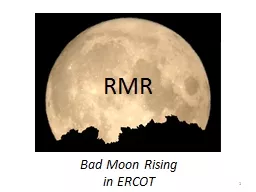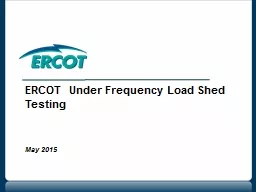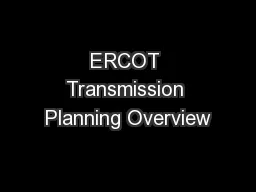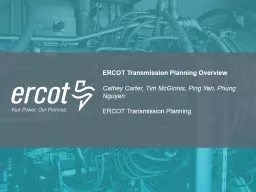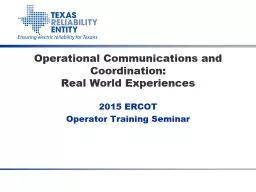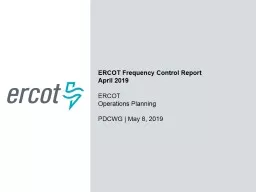PPT-Bad Moon Rising in ERCOT
Author : debby-jeon | Published Date : 2017-05-14
RMR 1 So youre going to be talking in a minute about an RMR contract in Houston and that should concern you what other RTOs also have that ERCOT does not have
Presentation Embed Code
Download Presentation
Download Presentation The PPT/PDF document "Bad Moon Rising in ERCOT" is the property of its rightful owner. Permission is granted to download and print the materials on this website for personal, non-commercial use only, and to display it on your personal computer provided you do not modify the materials and that you retain all copyright notices contained in the materials. By downloading content from our website, you accept the terms of this agreement.
Bad Moon Rising in ERCOT: Transcript
Download Rules Of Document
"Bad Moon Rising in ERCOT"The content belongs to its owner. You may download and print it for personal use, without modification, and keep all copyright notices. By downloading, you agree to these terms.
Related Documents

